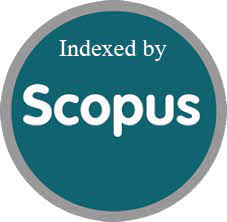Diagnostic dilemma of congenital segmental jejunal pseudo-dilatation associated with immature ganglion cells in the colon: A case report
DOI:
https://doi.org/10.52783/jns.v9.532Keywords:
Congenital segmental dilatation, Pseudo-dilatation, Neonate, Intestinal obstruction, Immature ganglion cellsAbstract
Background: Neonatal intestinal obstruction is one of the emergency conditions with many etiologies, amongst which congenital segmental dilatation of small intestine is one, which is characterized by three to four folds increase in diameter of the bowel. Immaturity of ganglion cells of large intestine is also one of the congenital intestinal neuronal malformations which may cause neonatal intestinal obstruction. Prompt diagnosis of these conditions is very difficult as clinical and radiological features are non-specific to them.
Case Presentation: A 3-day-old male baby presented with failure to pass meconium, abdominal distension, and bilious vomiting. At surgery, the baby had congenital segmental pseudo-dilatation of jejunum with immature ganglion cells in colon. Since it was not typical of a congenital segmental dilatation, it was left as such. The baby needed another laparotomy for resection of segmental pseudo-dilatation along with ileostomy.
Conclusion: Because of rarity and diagnostic dilemma, re-laparotomy with ileostomy, which could have been avoided, were performed in the baby. Lack of typical features of congenital segmental dilatation along with presence of immature ganglion cells in the colon were unusual findings in this case
Downloads
Metrics
References
Chanchlani R, Seth A, Rakhonde AK. Neonatal gastrointestinal emergencies in a tertiary care center in Bhopal, India: A prospective study. IJSS J Surg. 2015; 1:1-4.
Brahim MB, Belghith M, Mekki M, Jouini R, Sahnoun L, Maazoun K, et al. Segmental dilatation of the intestine. J Pediatr Surg. 2006; 41:1130-3.
Holschneider A, Puri P, Homrighausen LH, Meier-Ruge W. Intestinal neuronal malformation: Clinical expertise and treatment. In: Hirschsprung’s Disease and the Allied Disorders. 2008, 3rd ed., pp 232-5.
Burki T, Kiho L, Scheimberg I, Phelps S, Misra D, Ward H, et al. Neonatal functional intestinal obstruction and the presence of severely immature ganglion cells on rectal biopsy: 6 year experience. Pediatr Surg Int. 2011; 27:487-90.
Takahashi Y, Hamada Y, Taguchi T. Congenital segmental dilatation of the intestine. In: Pediatric Surgery: General Principles and Newborn Surgery, 2020, pp.1099-1105.
Hosie S, Lorenz C, Schaible T, Weber G, Waag KL. Segmental dilatation of the jejunum resembling prenatal volvulus. J Pediatr Surg. 2001; 36:927-9.
Mir E, Yegane S, Karaca I, Günşar C, Ceylan H. Segmental dilatation of the jejunum. Acta Paediatr Jpn. 1996; 38:69-71.
Swenson O, Rathauser F. Segmental dilatation of the colon; a new entity. Am J Surg. 1959; 97:734–8.
Cheng W, Lui VC, Chen QM, Tam PK. Enteric nervous system, interstitial cells of Cajal, and smooth muscle vacuolization in segmental dilatation of jejunum. J Pediatr Surg. 2001; 36:930-5.
Taguchi T, Masumoto K, Leiri S, Nakatsuji T, Akiyoshi J. New classification of hypoganglionosis: congenital and acquired hypoganglionosis. J Pediatr Surg. 2006; 41:2046–51.
Yamauchi K, Kubota A, Usui N, Yonekura T, Kosumi T, Nogami T, et al. Benign transient non-organic ileus. Eur J Pediatr Surg. 2002; 12:168-174.
Heaton ND, Howard ER, Garrett JR. Small left colon syndrome: an immature enteric plexus. J R Soc Med. 1991; 84:113-4.
Kubota A, Imura K, Yagi M, Kawahara H, Mushiake S, Nakayama M, et al. Functional ileus in neonates: Hirschsprung’s disease-allied disorders versus meconium related ileus. Eur J Pediatr Surg. 1999; 9:392-5.

Published
How to Cite
Issue
Section
License
Copyright (c) 2020 suman Bikram, Shovita Rana, Sanat Chalise

This work is licensed under a Creative Commons Attribution 4.0 International License.
You are free to:
- Share — copy and redistribute the material in any medium or format
- Adapt — remix, transform, and build upon the material for any purpose, even commercially.
Terms:
- Attribution — You must give appropriate credit, provide a link to the license, and indicate if changes were made. You may do so in any reasonable manner, but not in any way that suggests the licensor endorses you or your use.
- No additional restrictions — You may not apply legal terms or technological measures that legally restrict others from doing anything the license permits.










